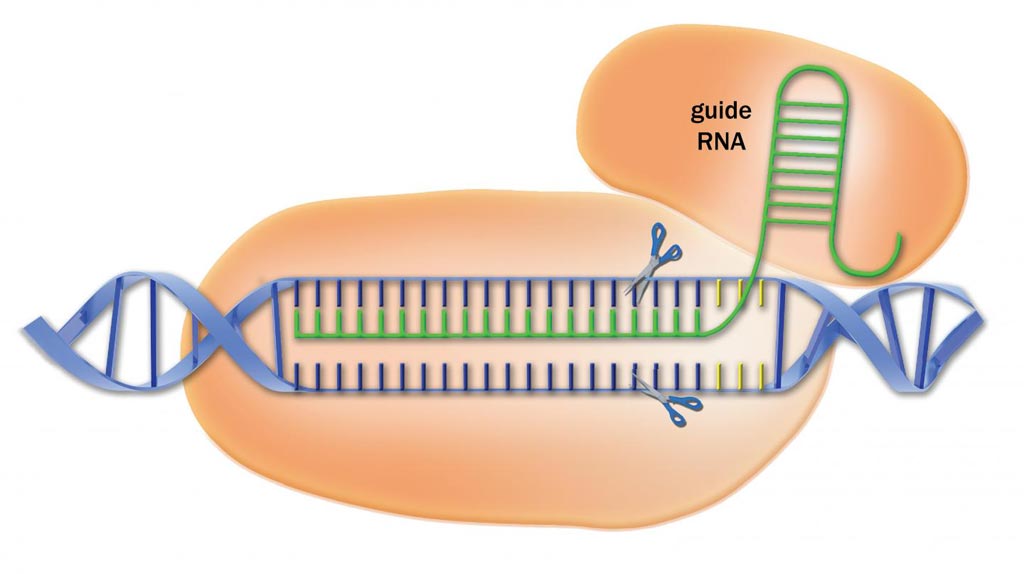RNA Library to Enhance CRISPR/Cas9 Gene Editing
By LabMedica International staff writers
Posted on 31 Jul 2017
A newly assembled library of RNA sequences was designed to maximize the usefulness of the CRISPR/Cas9 gene-editing tool.Posted on 31 Jul 2017
CRISPR/Cas9 is regarded as the cutting edge of molecular biology technology. CRISPRs (clustered regularly interspaced short palindromic repeats) are segments of prokaryotic DNA containing short repetitions of base sequences. Each repetition is followed by short segments of "spacer DNA" from previous exposures to a bacterial virus or plasmid. CRISPRs are found in approximately 40% of sequenced bacteria genomes and 90% of sequenced archaea. CRISPRs are often associated with cas genes that code for proteins related to CRISPRs.

Image: CRISPR/Cas9 is a reprogrammable DNA cutting machine that is being used to edit genomes in many organisms for research purposes. A new resource provides a library of guide sequences that significantly increases CRISPR\'s specificity, while limiting off-target effects (Photo courtesy of Advanced Analytical Technologies).
Since 2013, the CRISPR/Cas system has been used in research for gene editing (adding, disrupting, or changing the sequence of specific genes) and gene regulation. By delivering the Cas9 enzyme and appropriate guide RNAs (sgRNAs) into a cell, the organism's genome can be cut at any desired location. The conventional CRISPR/Cas9 system is composed of two parts: the Cas9 enzyme, which cleaves the DNA molecule and specific RNA guides (CRISPRs) that shepherd the Cas9 protein to the target gene on a DNA strand.
Investigators at Cold Spring Harbor Laboratory (NY, USA) and the University of Cambridge (United Kingdom) described a new CRISPR resource in the July 20, 2017, issue of the journal Molecular Cell.
The investigators combined a machine-learning approach with other strategies to optimize knockout efficiency with the CRISPR/Cas9 system. In addition, they developed a multiplexed sgRNA expression strategy that promoted the functional deletion of single genes and allowed for combinatorial targeting. These strategies were combined to design and construct a genome-wide, sequence-verified, arrayed CRISPR library.
The newly assembled library of RNA sequences will be available to direct the CRISPR-Cas9 complex to cut DNA with precision here-to-fore unattainable. This increases the likelihood that a CRISPR "cut" (or series of related cuts) will have the intended functional impact.
"We have combined a machine learning approach with other strategies to optimize knock-out efficiency," said senior author Dr. Greg Hannon, professor of molecular cancer biology at the University of Cambridge. "The CRISPR library also facilitates multiplexing of experiments, as well as combinatorial targeting."
Related Links:
Cold Spring Harbor Laboratory
University of Cambridge













